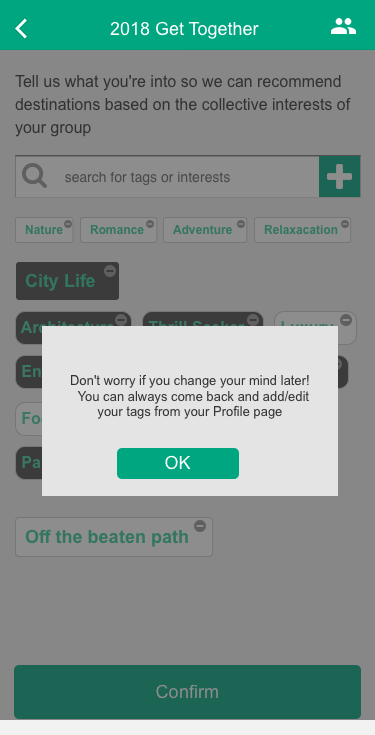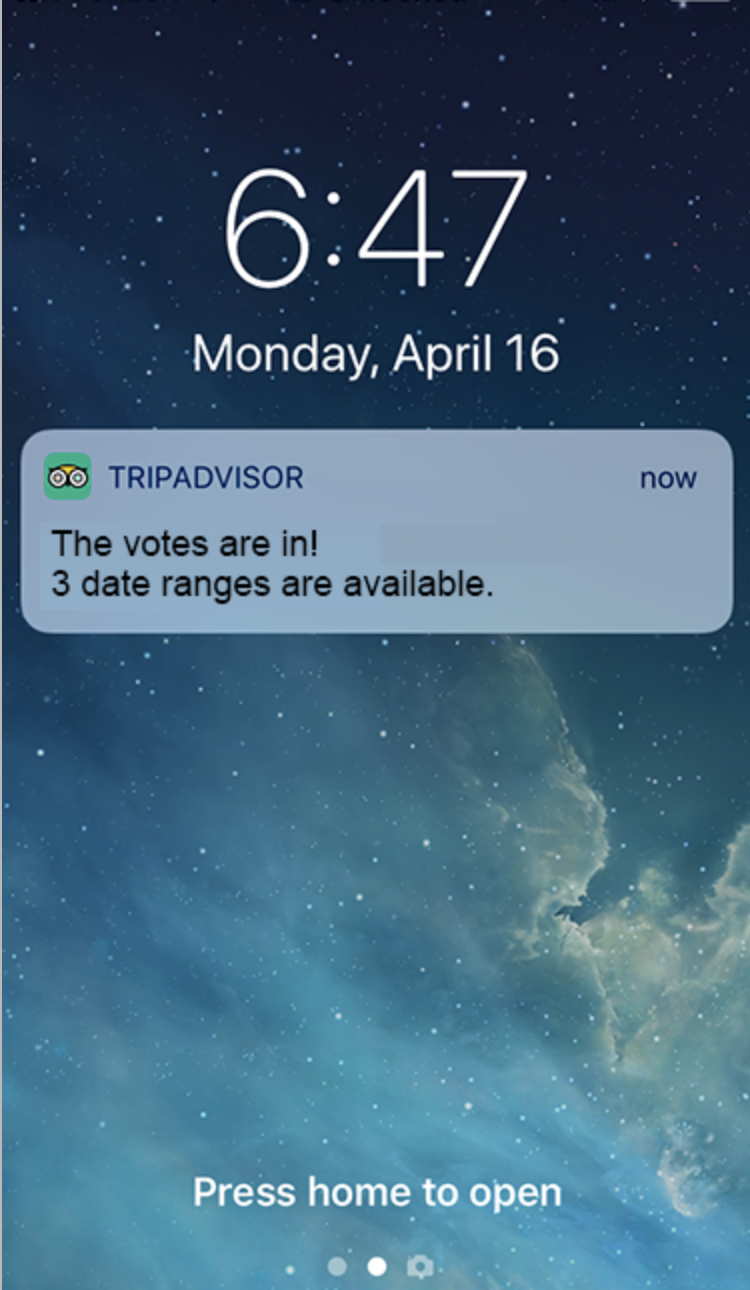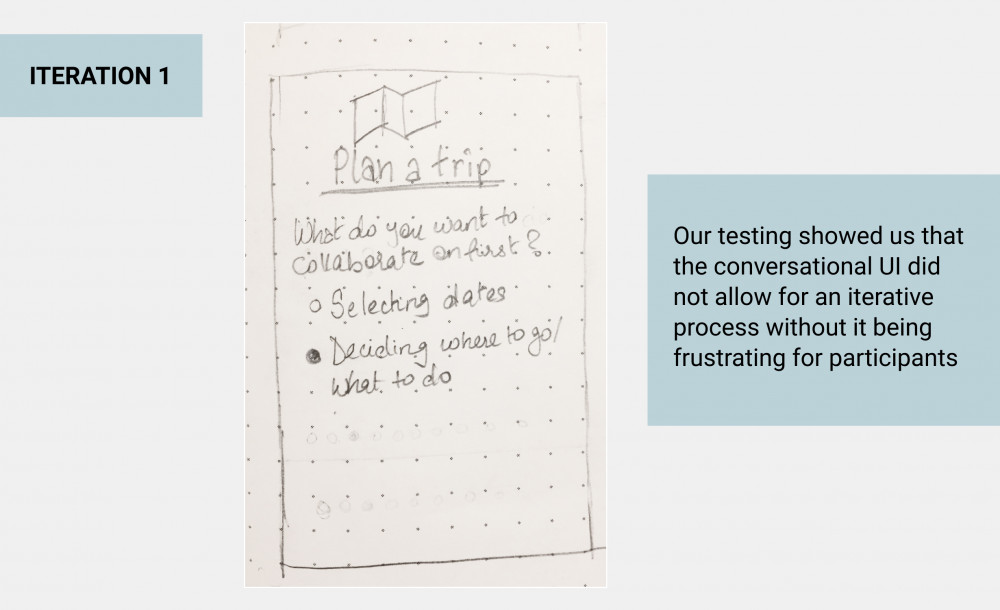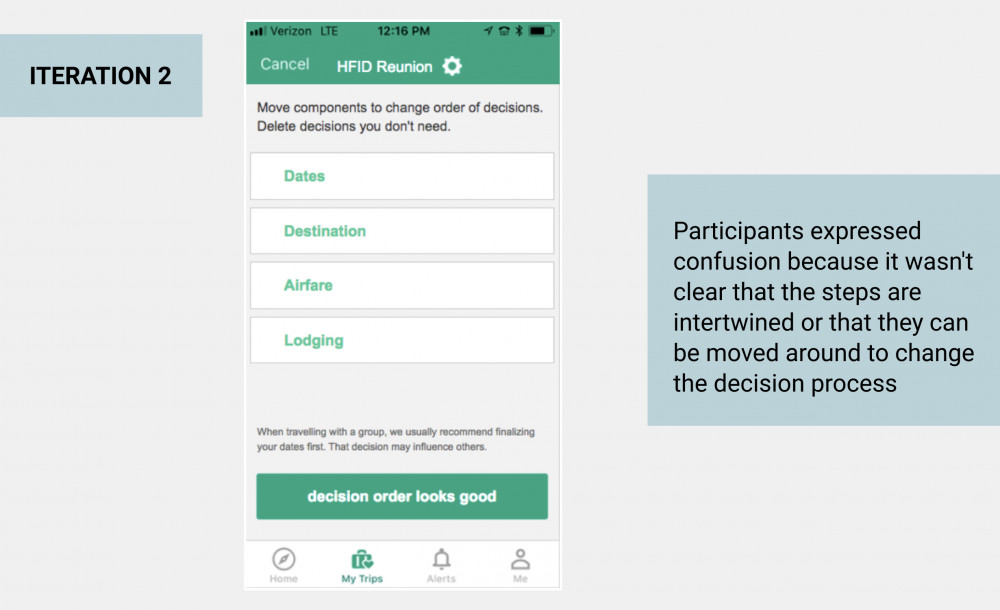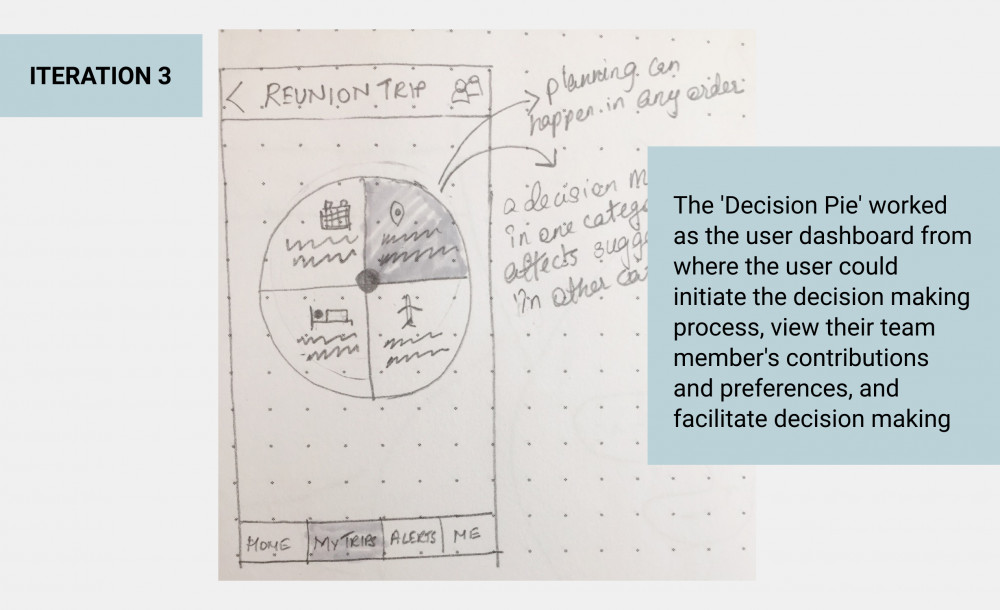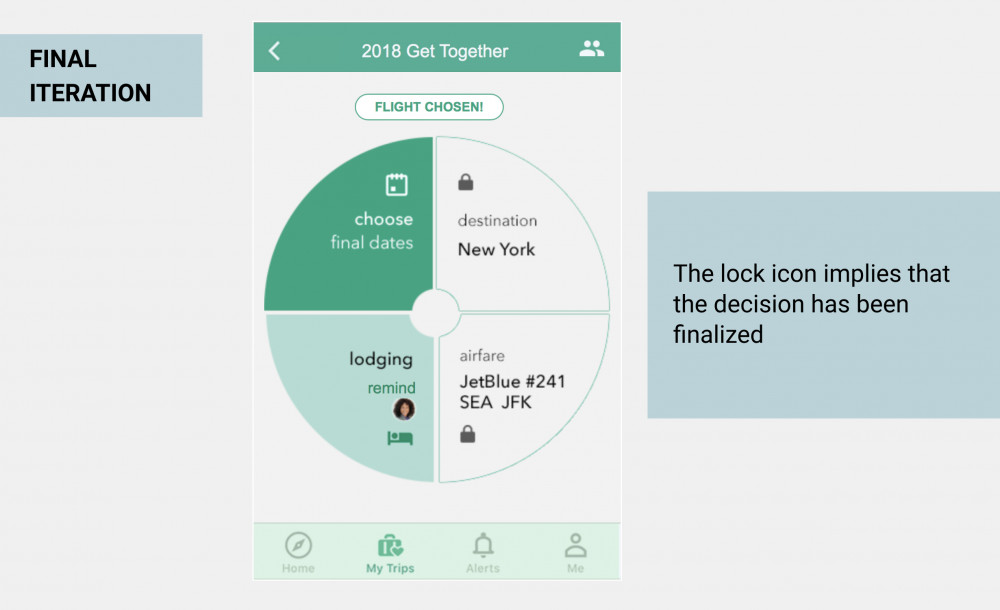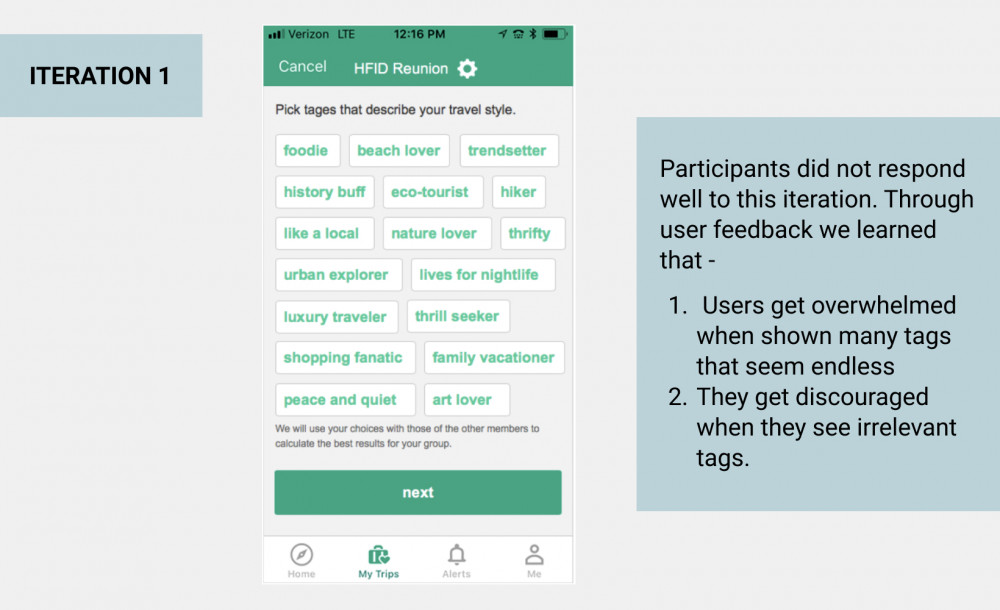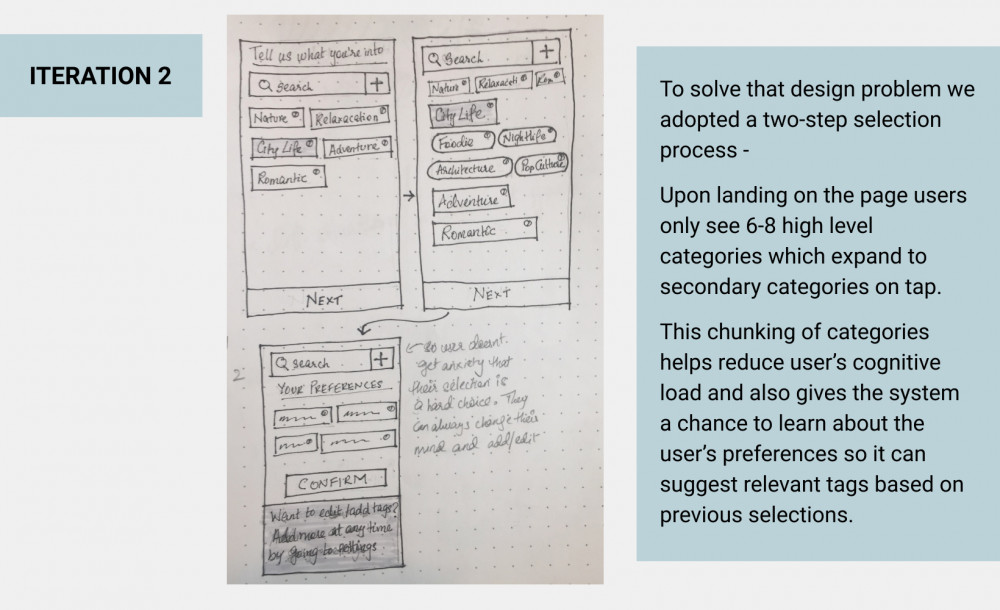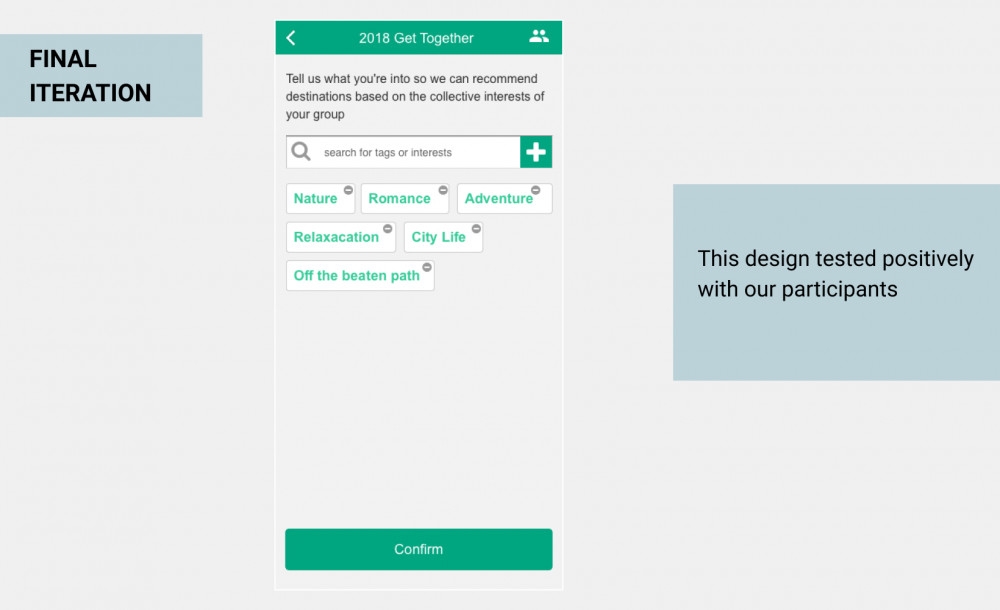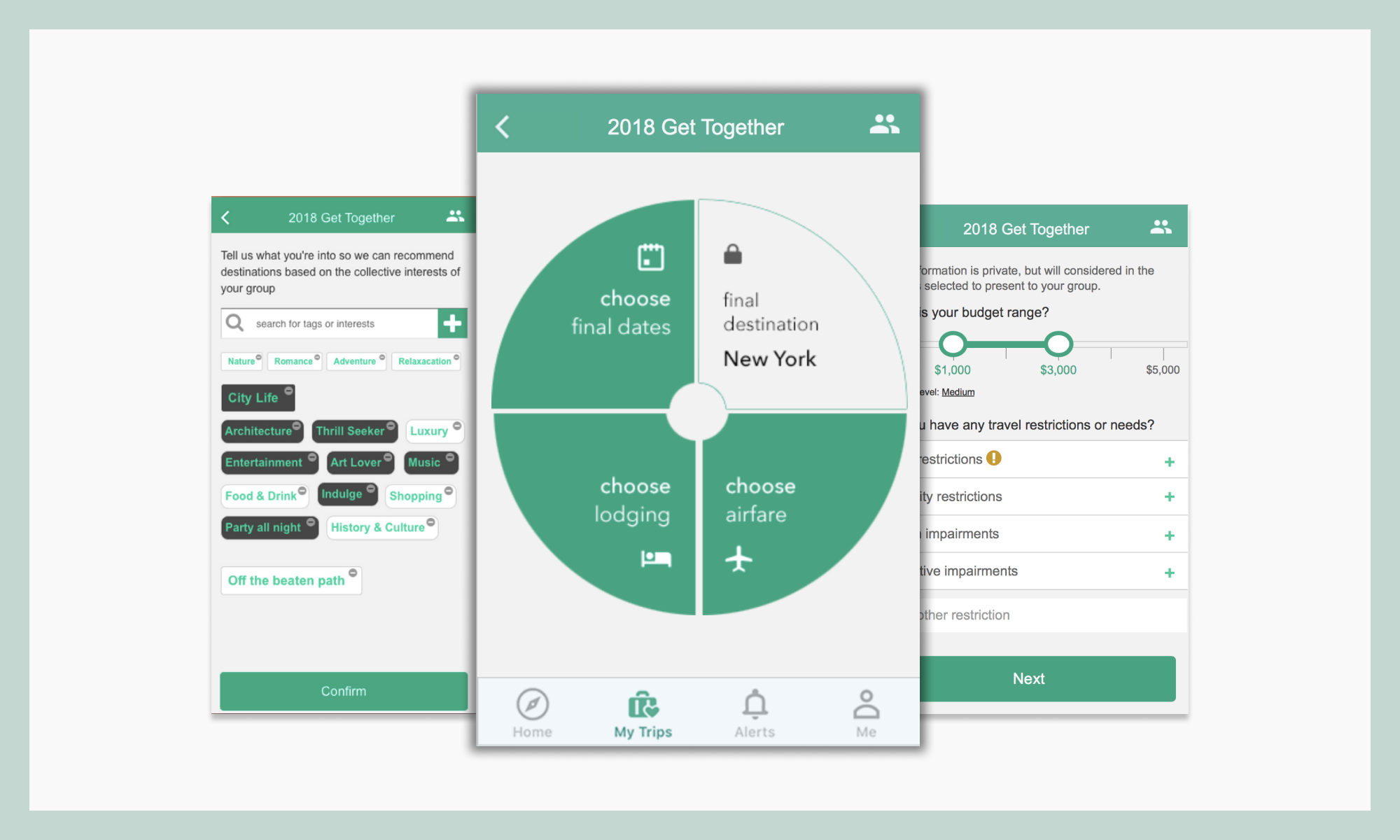
As part of the Intelligent User Interfaces coursework, my team and I worked with the User Experience Design and Research teams at TripAdvisor. We were asked to leverage TripAdvisor’s existing data structure and process flows to innovate on an intelligent solution that assists users in trip planning.
I conducted field research and multiple rounds of usability testing to inform the solution and design iterations. I participated, led and contributed in team ideation workshops, translated the user flow into sketched wireframes, designed high fidelity wireframes on Axure and contributed to the creation of the clickable prototype.
Location: Bentley University, Waltham, Massachusetts
Duration: 4 months
Methodology
1. EXPLORATORY RESEARCH
We conducted user interviews with 10 TripAdvisor’s target users on travel experiences and found a common pain point –
Planning a group trip is super stressful.
Keeping our focus on group travel we conducted a secondary round of interviews focusing on the realities and pain points of group travel. Analysis of this field research gave us our persona –

Using the persona as a guide, we revisited the research and identified actionable insights that we could translate to user flows and eventually wireframes.
2. DERIVE ACTIONABLE INSIGHTS FROM RESEARCH
+
3. ITERATIVE PROTOTYPING
Insight:
People prefer to start planning from different start points. Some prefer to select dates first, some lock their destination first and then decide dates based on when is the best time to visit the place. And these decisions are intertwined.
Design solution:
Instead of giving users a set linear process of decisions and stifling user control, we identify top 4 travel decisions required to plan a trip and give them an iterative process that allows them to select the order of what they want to work on first.
The ‘decision pie’ as the user dashboard where decisions are initiated, reviewed and finally confirmed.
Insight:
Everybody has different preferences but also similar preferences that align with the entire group’s collective goal.
Design solution:
Use of tags to select preferences.
We identified that sections like Destination Selection and Accommodation relied heavily on traveler’s preferences. We used tags to signify travel choices that users vote on. The system collects the responses and offers relevant recommendations based on the collective preferences of the group.
Insight:
There is a varying level of rigidity in people’s preferences.
Some preferences represent a must-have while other preferences can be readily changed.
Budget may be a hard constraint for some, while travel dates may be of utmost importance to others.
Design solution:
Accommodation for users to select hard and soft constraints on their personal preferences
Insight:
There is often a slacker in a group planning activity
Design solution:
Use notifications to announce other group member’s decision to prompt the slacker persona to take action
Add a reminder feature to nag the slacker persona to do their bit.
Insight:
Sometimes it is difficult reaching a consensus, especially if it is an even split.
Design solution:
Provide a space for group members to talk and persuade each other to make a decision.
An option of a coin flip when met with a decision the group cannot agree on.




